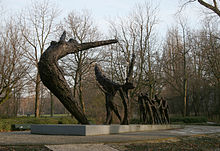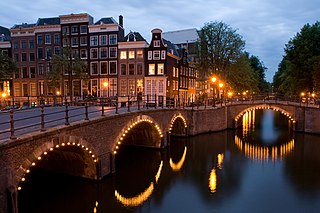
Amsterdam is the capital and most populous city of the Netherlands, with The Hague being the seat of government. It has a population of 907,976 within the city proper, 1,558,755 in the urban area and 2,480,394 in the metropolitan area. Located in the Dutch province of North Holland, Amsterdam is colloquially referred to as the "Venice of the North", for its large number of canals, now designated a UNESCO World Heritage Site.

The Rijksmuseum is the national museum of the Netherlands dedicated to Dutch arts and history and is located in Amsterdam. The museum is located at the Museum Square in the borough of Amsterdam South, close to the Van Gogh Museum, the Stedelijk Museum Amsterdam, and the Concertgebouw.

Amersfoort is a city and municipality in the province of Utrecht, Netherlands, about 20 km from the city of Utrecht and 40 km south east of Amsterdam. As of 1 December 2021, the municipality had a population of 158,531, making it the second-largest of the province and fifteenth-largest of the country. Amersfoort is also one of the largest Dutch railway junctions with its three stations—Amersfoort Centraal, Schothorst and Vathorst—due to its location on two of the Netherlands' main east to west and north to south railway lines. The city was used during the 1928 Summer Olympics as a venue for the modern pentathlon events. Amersfoort marked its 750th anniversary as a city in 2009.

Sint Eustatius, also known locally as Statia, is an island in the Caribbean. It is a special municipality of the Netherlands.

The University of Amsterdam is a public research university located in Amsterdam, Netherlands. The UvA is one of two large, publicly funded research universities in the city, the other being the Vrije Universiteit Amsterdam (VU). Established in 1632 by municipal authorities and later renamed for the city of Amsterdam, the University of Amsterdam is the third-oldest university in the Netherlands. It is one of the largest research universities in Europe with 31,186 students, 4,794 staff, 1,340 PhD students and an annual budget of €600 million. It is the largest university in the Netherlands by enrollment. The main campus is located in central Amsterdam, with a few faculties located in adjacent boroughs. The university is organised into seven faculties: Humanities, Social and Behavioural Sciences, Economics and Business, Science, Law, Medicine, Dentistry.
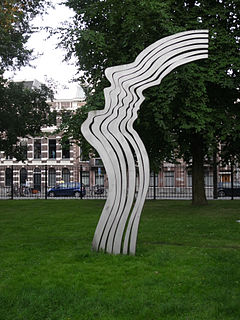
De Schreeuw is a sculpture in the Oosterpark in Amsterdam that commemorates the assassinated Dutch film-maker Theo van Gogh. The monument was designed by Jeroen Henneman as a symbol of freedom of speech.
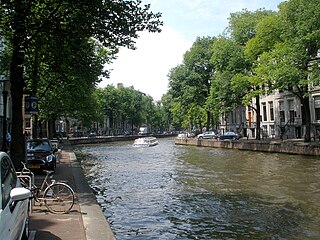
The Gouden Bocht is the most prestigious part of the Herengracht in Amsterdam, Netherlands, between Leidsestraat and Vijzelstraat.

The Westerpark is a public urban park in Amsterdam, Netherlands. The former borough (stadsdeel) of Westerpark is named after the park, as is the current neighborhood.
The National Institute for the Study of Dutch Slavery and its Legacy is based in Amsterdam, Netherlands and was established to document the history of Dutch Slavery from various perspectives. In 2001, the Dutch government created the institute to research, educate, discuss and process the history of Dutch slavery and its legacy.

Ketikoti, sometimes spelled as Keti Koti, or officially Dag der Vrijheden is an annual celebration on 1 July that marks Emancipation Day in Suriname. The day is also known as Manspasi Dei or Prisiri Manspasi, meaning "Emancipation" or "Emancipation Festival". or Kettingsnijden.

Parque de la Abolición is a city park in Barrio Cuarto, Ponce, Puerto Rico. It is the only park in the Caribbean commemorating the abolition of slavery. It was built in 1874 and renovated in 1956.

Flevopark is a park located in the Indische Buurt, in the eastern portion of the city of Amsterdam, in the province of North Holland, Netherlands.

The National Monument on Dam Square is a 1956 cenotaph in Amsterdam, Netherlands. A national Remembrance of the Dead ceremony is held at the monument every year on 4 May to commemorate the casualties of World War II and subsequent armed conflicts.
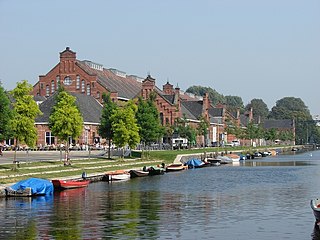
The Westergasfabriek is a former gasworks in Amsterdam, the Netherlands, now used as a cultural venue.

The Royal Tropical Institute is an applied knowledge institute located in Amsterdam, Netherlands. It is an independent centre of expertise, education, intercultural cooperation and hospitality dedicated to sustainable development.
The following is a timeline of the history of the municipality of Amsterdam, Netherlands.

Hermanus 'Herman' Jacobus Coster was a Dutch lawyer and State Attorney of the Zuid-Afrikaansche Republiek.
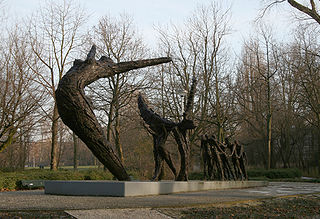
The History of Dutch slavery involves slavery in the Netherlands itself, as well as the establishment of slavery outside the Netherlands in which it played a role. The Netherlands banned the slave trade in 1814 after being compelled by Britain.

The statue of Kwakoe in the Surinames capital Paramaribo is a monument commemorating the abolition of slavery. It was made by the sculptor Jozef Klas.




